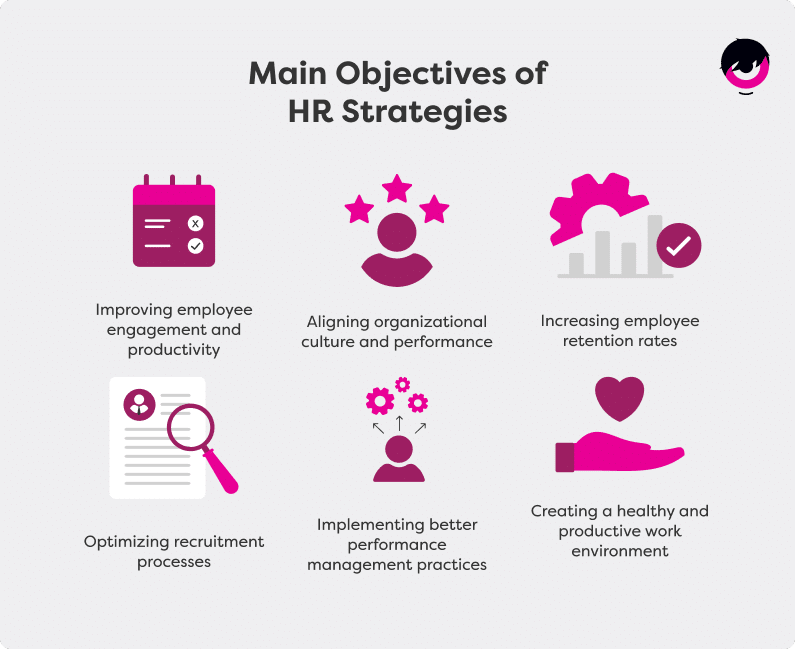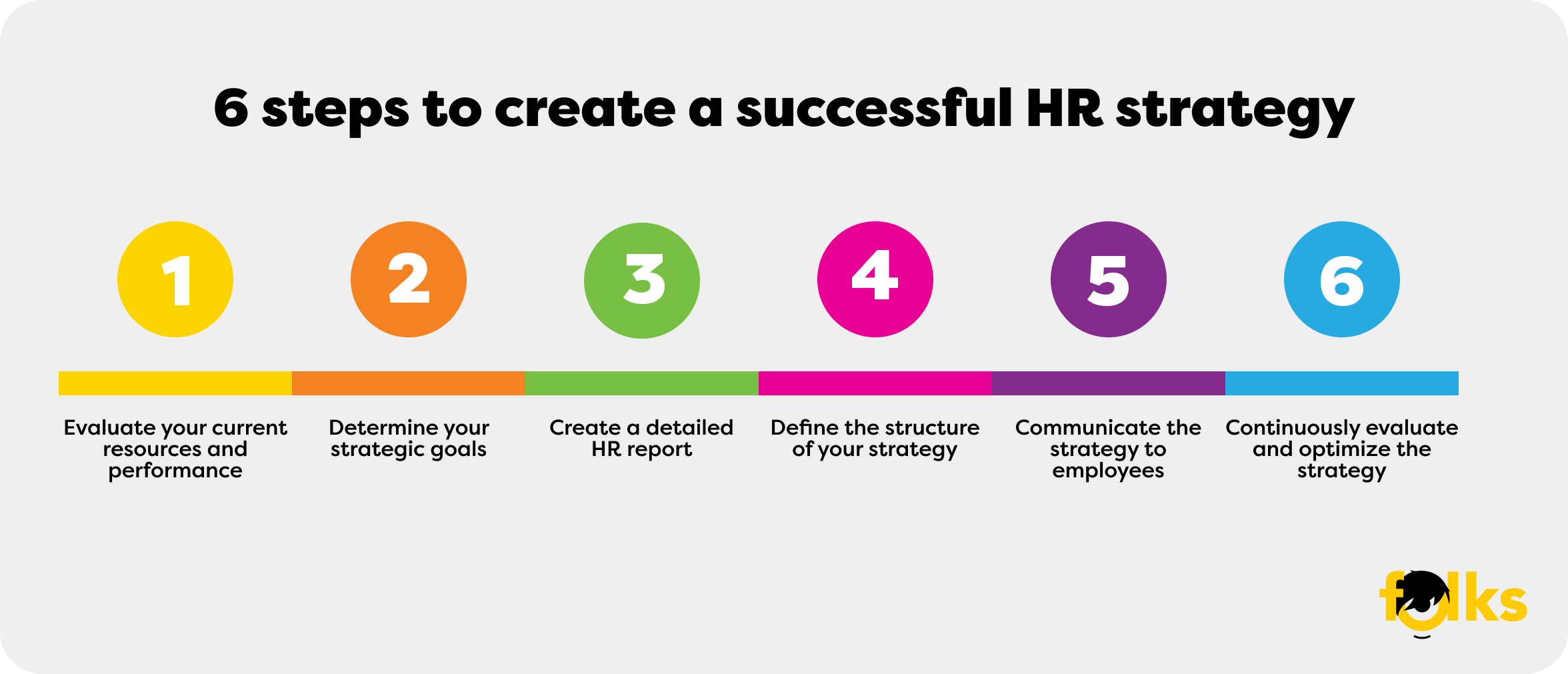Now that you have an idea of the “what” and “why” of your HR strategy, it’s time to define the “how“.
You should create a plan detailing the stages of your HR strategy, the players involved (departments and managers), their main tasks (implementing the strategy within their teams, communicating effectively on projects), and the timescales within which you want to achieve your objectives.
It’s also essential to have clear targets in mind, such as SMART (specific, measurable, achievable, realistic and time-bound) objectives for each strand of your strategy, but also to have a means of analyzing your results, such as HR dashboards, an audit, or sending out surveys throughout the organization.

















